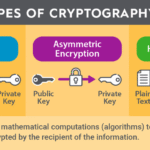In an increasingly interconnected world, the notion of data protection is as critical as it is complex. Encryption stands as a beacon in the ongoing effort to safeguard sensitive information against the myriad threats posed by malicious actors. However, the question looms large: Is encryption alone sufficient to ensure the integrity and privacy of our data? This inquiry reveals deeper layers of concern and fascination regarding the nature of data security.
To fathom the efficacy of encryption, one must first grasp its fundamental premise. Encryption transforms plaintext into ciphertext through the application of mathematical algorithms, rendering the original information indecipherable to those lacking the requisite keys. While this cryptographic shield is potent, it is not infallible. Attackers have developed sophisticated techniques aimed at circumventing encryption, ranging from brute-force assaults to exploiting human factors—a theme that recurs throughout the discourse on data security.
Central to the conversation about encryption is its inherent limitations. One must acknowledge that encryption does not inherently protect data from being accessed; rather, it protects data from being understood. If a hacker acquires the encryption keys through nefarious means, the barriers erected by encryption dissolve. Furthermore, the efficacy of encryption is contingent upon the strength of the algorithms employed. Weak algorithms are susceptible to cryptanalysis, while deprecated protocols can gravely endanger sensitive data.
Another critical dimension of data security is the concept of end-to-end encryption. This methodology ensures that data is encrypted from the moment it leaves the sender until it reaches its intended recipient. It fortifies privacy by preventing intermediaries from accessing the data. However, this approach is not devoid of complications. For instance, if users do not possess adequate security hygiene—such as using weak passwords or failing to update software—the sanctity of data transmission can be compromised. The paradox is palpable; while end-to-end encryption strengthens data protection, it simultaneously relies heavily on user diligence.
Moreover, encryption does not address the vulnerabilities that exist at endpoints. Devices can be infiltrated by malware or compromised by other means despite the presence of robust encryption. A determined adversary can exploit these vulnerabilities, thereby gaining access to raw, unencrypted data. This brings to light the notion of “defense in depth”—a multifaceted strategy that transcends mere encryption to encompass a range of protective measures including firewalls, intrusion detection systems, and comprehensive security practices.
The interplay between encryption and user behavior is another profound area of exploration. Social engineering attacks exploit psychological factors, rendering even the most sophisticated encryption moot. If an attacker can manipulate a user into revealing their credentials or unwittingly granting access, the encryption that guards data becomes irrelevant. Hence, the human element remains a crucial frontier in the quest for comprehensive data security. Training and educating users about common threats can substantially mitigate risks associated with human error.
Legal and regulatory frameworks further complicate the landscape of data protection. Compliance with standards such as the General Data Protection Regulation (GDPR) and the Health Insurance Portability and Accountability Act (HIPAA) necessitates not just encryption, but a holistic approach to data governance. Organizations must maintain rigorous data handling processes, including data minimization, access controls, and audit trails. The stakes of non-compliance are staggering—ramifications may include substantial fines and reputational damage, underscoring the necessity for a multi-pronged security strategy.
Furthermore, the rapid evolution of technology poses an ever-present challenge. Quantum computing stands on the horizon, threatening to render traditional encryption methods obsolete. Quantum algorithms could, in theory, break current cryptographic protocols, prompting a race among cryptographers to develop quantum-resistant encryption. This scenario accentuates the precariousness of relying solely on encryption as a long-term solution; adaptability and innovation are paramount in this landscape.
In tandem with technological advancements, the proliferation of cloud computing services has introduced a layer of complexity to data protection. Storing sensitive information in remote servers raises questions of control and trust. Users must be discerning when selecting cloud providers, ensuring that robust encryption practices are in place alongside stringent governance. The shared responsibility model advocates for a collaborative approach where organizations and service providers work in concert to uphold security standards.
Lastly, the discourse around encryption must acknowledge the ethical dimensions of data protection. As digital environments expand, the ethical obligations of organizations to protect user data come under scrutiny. A culture of accountability is essential, where data protection is not just a technical requirement but a moral imperative. Transparency in data handling and proactive communication with users can foster trust, further fortifying the social contract between entities and the public.
In conclusion, while encryption serves as a formidable tool in the arsenal of data protection, it is not a panacea. The multifaceted nature of data security necessitates an equilibrium between technological safeguards, user education, regulatory compliance, and ethical responsibility. A comprehensive understanding of these components is vital for navigating the complexities of the digital age, where data integrity and privacy are paramount. Thus, the journey towards truly safeguarding data is not solely about encryption but rather an intricate dance of vigilance, education, and adaptability.









Leave a Comment